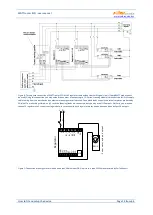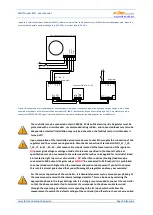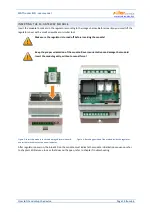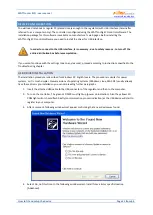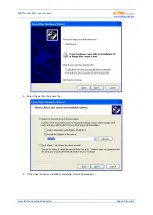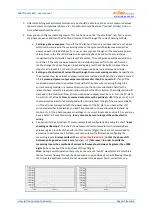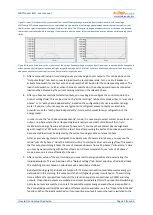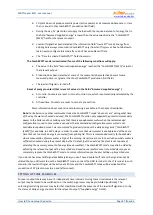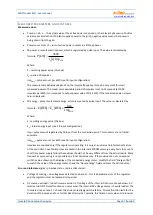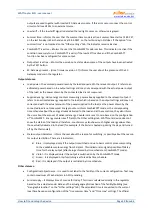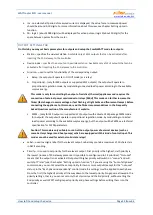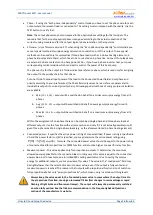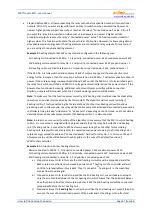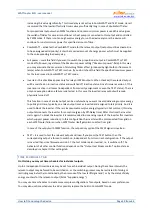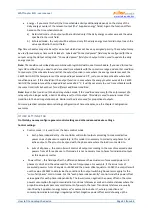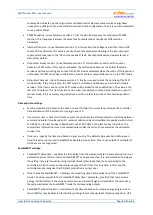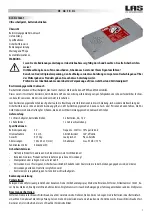
WATTrouter ECO - user manual
www.solarcontrols.cz
How to fit and setup the device
Page 27 from 66
b.
PV-plant does not produce electric power (active powers at all measured phases are <= (less
than or equal to the) CombiWATT production limit field).
c.
During the day, PV-plant did not supply the load with the required amount of energy, that is,
the field "Assumed supplied energy" is lower than the value specified in the "CombiWATT
[kWh]" field for the relevant output.
d.
Low tariff signal has been detected (the information field "low tariff" is red). Energy from
public grid is always consumed in CombiWATT only if low tariff is
present
. See note below to
learn how to configure this mode if you don't have double tariff rate.
e.
The "Time to activate CombiWATT"-field shows zero.
The CombiWATT mode is deactivated if some of the following conditions will apply:
a.
The value in the field "Assumed supplied energy" reached the "CombiWATT [kWh]" value for
the relevant output.
b.
Production has been detected at some of the measured phases (active power at some
measured phase is > (greater than the) CombiWATT production limit field).
c.
The low tariff signal is turned off.
Reset of energy counters (that is reset of values in the fields "Assumed supplied energy")
a.
At sunrise. Counters are reset to zero at sunrise time, which is automatically calculated by the
controller.
b.
At fixed time. Counters are reset to zero at a preset time.
More information about counter reset processing is available in the chapter Description.
Note:
For boilers or any other warm water tanks the CombiWATT mode "does not care" during what time
of the day the water is heated and used. The CombiWATT function only supplies the preset minimum daily
power to the boiler and thus making sure that there is enough warm water when the recommended
configuration is used. In cases when even under the recommended configuration warm water is not
available in required amount, we recommend to gradually increase the daily energy limit ("CombiWATT
[kWh]
"
) for example, in 1 kWh steps, in order to make sure that warm water is available and at the same
time that not too much energy is consumed from public grid. This is recommended mostly for households
where consumption of warm water is high at the evening. Here it may come to the situation where water is
sufficiently heated during the present day by the PV-plant, but the next day the plant is not capable of
providing the necessary amount of energy (cloudy weather). The CombiWATT mode may also be aided by
enforcing the relevant output with a time schedule. Based on user preferences, time schedules may even
completely replace the CombiWATT mode. For more information see chapter Setting up time schedules.
If you do not have low tariff signal available (either you don't have double tariff rate or the signal cannot be
utilized) but you still want to use the CombiWATT mode, connect the GND terminal to the LT terminal. In such
scenario, the low tariff signal will be active at all times and the CombiWATT mode will be activated after
production of PV-plant comes to an end (after sunset).
SETTING UP TIME SCHEDULES
For every output there may be set 2 independent time intervals. During these time intervals the relevant
output may be forced to be switched on or the switching process may be prohibited (restricted). The
enforcing/restricting process may be further conditioned with the presence of the low tariff signal and / or by
the status of daily energy counters for the relevant output ("Supplied energy"-fields).


